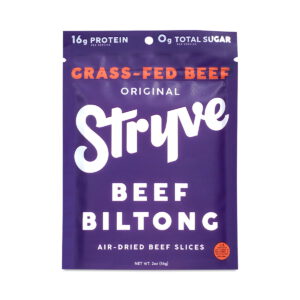- Understanding Nutritional Needs
- Quick and Easy Meal Prep Strategies
- Budget-Friendly Healthy Ingredients
- Simple Recipes for Breakfast, Lunch, and Dinner
- Time-Saving Cooking Techniques
- Tips for Maintaining Healthy Eating Habits
When grocery shopping, especially for busy individuals seeking to maintain a healthy diet, it’s crucial to approach the store with informed strategies. Understanding your nutritional needs will empower your choices, making it easier to prioritize health without sacrificing time or budget. Start by familiarizing yourself with food labels; they are your best tool for making selections that support your dietary goals. Look for items that are high in fiber and protein but low in added sugars and unhealthy fats.
Local farmers’ markets are excellent places to find organic foods at reasonable prices. Produce that is in season not only tastes better but is often more affordable due to the reduced costs of transportation and storage. Experiment with local grains like quinoa and barley, which can form the base of nutritious, hearty meals. Don’t overlook legumes; canned beans or dried lentils, which are often budget-friendly and rich in protein, can easily bolster your meals.
For those adhering to a vegan lifestyle, scouting out specific products can enhance your shopping experience. Brands that specialize in plant-based proteins—like Beyond Meat or Gardein—often have sales or coupons available online. Combine these with fiber-rich veggies such as kale, carrots, and bell peppers to create balanced meals that support both health and environmental sustainability.
In addition to choosing fresh ingredients, mindful budgeting is key. Plan your meals for the week and create a shopping list to prevent impulse buys. This can save you money and ensure you only buy what you need. Additionally, consider shopping at discount grocery stores or utilizing store loyalty programs. Many chains offer discounts on healthy items for members, which can add up over time.
When shopping online, be aware of safety and accuracy. Verify the reliability of your source and check reviews to avoid subpar products. Look for organic certifications or healthy eating incentives when selecting goods, as this information can be a shorthand for quality. Remember to check the expiry dates and packaging integrity, as damaged packaging may indicate compromised contents.
Lastly, don’t hesitate to experiment. New food trends can offer unexpected flavors while keeping you engaged in your cooking. For instance, incorporating superfoods like spirulina or chia seeds into your smoothies can elevate their value and provide essential nutrients. Stay dynamic in your approach to grocery shopping, and you’ll find that healthy meals can be both affordable and vibrant!
Quick and Easy Meal Prep Strategies
Meal prepping can significantly ease the stress of maintaining a healthy diet for busy individuals who often struggle with time constraints. Implementing effective strategies for quick and easy meal prep ensures that nutritious, affordable meals are accessible throughout the week. Here are some proven methods to streamline the meal prep process.
One efficient strategy involves dedicating a specific day each week for meal prep. Choosing a day that aligns with your schedule, such as Sunday, can set the tone for a successful week ahead. On this designated day, lay out all the ingredients and tools needed. Having a clear plan will minimize decisions during the week, allowing for faster meal assembly.
Batch cooking is another cornerstone of effective meal prep. By cooking large quantities of staple foods such as grains, proteins, and roasted vegetables at once, you can create base meals that can easily be mixed and matched throughout the week. For example, cooking a big pot of quinoa or brown rice can provide a versatile base that pairs well with various proteins and veggies. Leftover grilled chicken can be used in wraps, salads, or stir-fries, helping to prevent food waste and save time on cooking.
Utilizing containers specifically designed for meal storage is crucial. Invest in a set of stackable, microwave-safe containers that allow for portion-controlled meals while being easy to access. Labeling these containers with the meal contents and dates can further ensure that nothing goes to waste, and it simplifies the process of grabbing meals on the go.
Additionally, incorporating a wide variety of ingredients enhances not only the nutritional value of your meals but also keeps them exciting. Preparing an array of proteins such as tofu, beans, and fish allows for diverse meals throughout the week, catering to different cravings without needing extensive cooking time. Consider the following comparison of meal prep options:
| Meal Prep Option | Time Required | Nutritional Benefits | Cost-Efficiency |
|---|---|---|---|
| Batch Cooking Grains | 30 minutes for a week’s worth | High in fiber and essential B vitamins | Low-cost grains like brown rice or quinoa |
| Protein Variety | 1 hour for various cooking methods | Supports muscle health with diverse protein sources | Utilization of bulk products like beans |
| Vegetable Prep | 15 minutes for chopping and roasting | Rich in vitamins and minerals | Seasonal veggies can be very affordable |
Snacks are often neglected in meal prep, yet they can contribute significantly to maintaining energy levels throughout busy days. Preparing healthy snacks in advance, like cut-up vegetables and hummus, or portioned nuts can prevent unhealthy snacking when hunger strikes.
Incorporating these meal prep strategies will not only promote healthier eating habits but will also empower busy individuals to make better dietary choices without succumbing to the temptation of fast food. With careful planning, meal preparation can seamlessly fit into a hectic schedule, ensuring that you have an arsenal of affordable meals ready to go.
Budget-Friendly Healthy Ingredients

When it comes to grocery shopping, being savvy about your choices can lead you to budget-friendly, healthy ingredients that fit well into your lifestyle without breaking the bank. Start by making a list of staples that are both nutritious and versatile, including items like whole grains, legumes, and seasonal produce. Whole grains such as brown rice, quinoa, and oats are not only affordable but also provide essential nutrients and fiber that keep you feeling full longer. Utilize dried beans or lentils instead of canned goods to save money; they are packed with protein and can be easily cooked in batches.
Visiting local farmers’ markets is another fantastic way to discover fresh, organic foods that can support healthy eating on a budget. Buying fruits and vegetables directly from local vendors often yields more affordable prices compared to supermarket chains. Search for discounts on seasonal produce, as items like tomatoes, bell peppers, and leafy greens are typically cheaper and tastier when in peak season. Not only do you get the benefit of freshness, but you also support local agriculture.
If you’re following a vegan diet, look for plant-based proteins such as chickpeas, lentils, and tempeh, which tend to be inexpensive yet nutritionally dense options. Combine these with frozen vegetables, which retain most of their nutrients and are often cheaper than fresh alternatives. Stores often run promotions on frozen veggies, making it easy to stock up without overspending.
Shopping on a budget also means being smart about your purchases. Plan your meals for the week, and create a detailed shopping list beforehand. Stick to your list to avoid impulse buys; this simple act can save you significant amounts on your grocery bill while ensuring you buy only what you need. Keep an eye out for sales or coupons for healthy items, and consider joining store loyalty programs for additional discounts.
When it comes to cooking oils and seasonings, purchasing in bulk can be a great saver. Opt for larger containers of olive oil or coconut oil, as they tend to be more economical in the long run. Additionally, stock up on dried herbs and spices, as these can elevate even the simplest meal, turning basic grains and vegetables into flavorful dishes that keep you excited about your healthy eating habits.
For online grocery shopping, always verify the safety of the website and read reviews to ensure quality. Look for sites that offer organic products with verified ratings, and be cautious of heavily discounted items that may compromise your dietary standards. Additionally, when ordering perishables, ensure the delivery service maintains proper temperature controls to prevent spoilage. Check for seals on packages, and closely inspect expiry dates upon receipt.
Engaging in the beer buying experience can also increase your awareness of healthy ingredients while being budget-conscious. Challenge yourself to compare different brands and prices, and consider alternative products that align with both your ethics and your wallet. You might find alternatives to single-use plastic packaging or brands that focus on sustainable sourcing of ingredients. Such practices often lead to greater satisfaction with your purchases.
Following these grocery shopping tips allows busy individuals to embrace healthy eating without the stress of overspending. With a bit of planning and creativity, you’ll find that accessing affordable meals is entirely achievable, full of flavor, and beneficial for your overall health!
Simple Recipes for Breakfast, Lunch, and Dinner
For breakfast, a simple overnight oats recipe can be a game changer. Combine rolled oats with your choice of milk or yogurt, and let it sit in the fridge overnight. In the morning, add toppings like fresh fruits, a drizzle of honey, or a sprinkle of nuts for added texture and flavor. This nutritious meal is not only quick to prepare but also budget-friendly, especially when you buy oats in bulk.
For a hearty lunch, try a quinoa and black bean salad. Cook a batch of quinoa and mix it with canned black beans. Add diced bell peppers, corn, and chopped cilantro, and dress it with lime juice and olive oil. This recipe is not only colorful and appetizing but also provides a great source of protein and fiber, ensuring that busy individuals stay energized throughout the day. Prepare a larger portion to have leftovers for the next day’s lunch, saving time and effort.
When it comes to dinner, a stir-fry is an ideal option. Utilize a variety of frozen vegetables, which are often more affordable and equally nutritious to fresh ones. Sauté with your choice of protein, such as chicken, tofu, or shrimp, and toss in soy sauce or a store-bought stir-fry sauce for quick flavor. Serve over brown rice or whole-grain noodles for a complete meal that’s easy to throw together after a long day.
Don’t forget about snacks! Homemade energy balls made from oats, nut butter, and honey can serve as a perfect on-the-go option. Roll the mixture into bite-sized balls and refrigerate them for a quick energy boost when you’re feeling peckish.
“Healthy eating is a way of life, so it’s important to establish habits that are simple, realistically lead you to success, and that you can maintain over time.” – Horace
These simple recipes not only help streamline your cooking process but also ensure that maintaining healthy eating habits becomes a feasible part of your busy lifestyle. By incorporating these dishes into your weekly meal rotation, you can enjoy affordable meals that nourish your body without consuming too much time or effort.
Time-Saving Cooking Techniques
Efficient cooking techniques can dramatically reduce the time you spend in the kitchen, allowing busy individuals to enjoy healthy meals without the stress. One such method is the use of appliances that simplify cooking tasks. Items like slow cookers or instant pots can be game-changers; they enable you to toss in your ingredients at the beginning of the day and return to a delicious, nutritious meal ready to serve. This not only saves cooking time but also allows the flavors to meld beautifully, often enhancing the taste of your dishes.
Another valuable technique is to learn how to multitask while cooking. While one pot is simmering, use that time to prepare side dishes or chop vegetables for another recipe. Organize your workspace efficiently so you can move swiftly from one task to another. Keep a cutting board and knife handy to minimize downtime; doing so will help you maintain momentum in the kitchen. For example, while your brown rice cooks, you can chop vegetables for a quick stir-fry or prepare a simple salad, keeping your meal healthy and time-efficient.
One practical approach is the “one-pan” method. By cooking all your ingredients on a single sheet pan, you not only cut down on cooking and cleanup time but also allow the various flavors to complement each other as they roast. Toss chicken, a selection of seasonal vegetables, and a drizzle of olive oil with your favorite spices directly on the pan and let the oven do the work. This technique ensures you have balanced meals and can easily adjust quantities based on your dietary needs, creating affordable meals with minimal effort.
Prep ahead by doing some research on quick-cooking grains and proteins. For instance, quinoa cooks in just about 15 minutes, while certain fish fillets can be grilled or roasted in a matter of minutes. Keeping these quick-cooking items on hand means you’ll always have the ingredients for a healthy meal ready when the time constraints of the day kick in. Frozen vegetables are another excellent solution; they save time on washing and chopping, while still offering diverse and nutritious options for your meals.
Convenience also comes into play with the use of pre-cut or pre-washed produce. While they may be a bit pricier, if time is of the essence, these options can be invaluable in maintaining both health and efficiency. For those who enjoy gardening, growing your own herbs can provide fresh flavor without the last-minute runs to the store, further enhancing your affordability and accessibility to healthy eating.
- How can I save time while cooking healthy meals?
- Utilize appliances like slow cookers or instant pots to prepare meals effortlessly. Also, multitask by cooking different components of your meal simultaneously and consider one-pan meals to minimize preparation and cleanup time.
- Are frozen vegetables as nutritious as fresh ones?
- Yes, frozen vegetables are typically flash-frozen right after harvesting, preserving their nutrients. They can be a convenient and cost-effective option, often being cheaper than fresh produce while retaining much of their flavor and health benefits.
- What are some quick protein options for busy individuals?
- Consider lean meats like chicken breast, fish fillets, or plant-based proteins such as tofu and canned beans, which cook quickly or require minimal preparation. Keeping these on hand ensures you can whip up a healthy meal on short notice.
- How can I make my meals more affordable?
- Plan your meals and create a grocery list to prevent impulse buys. Focus on budget-friendly staples like grains, legumes, and seasonal produce, as these items generally offer more nutrition at a lower cost.
- Is meal prepping necessary for healthy eating?
- While not strictly necessary, meal prepping can significantly ease the stress of maintaining healthy eating habits, especially for busy individuals. It allows you to have ready-to-eat meals that can help prevent unhealthy snacking.
- What are one-pan meals and why are they beneficial?
- One-pan meals are prepared by cooking all ingredients on a single sheet pan or pot. This method saves cooking time, simplifies cleanup, and often allows flavors to develop harmoniously.
- How can I make using herbs easier in my cooking?
- Grow your own herbs if possible, as they enhance flavor without added calories or cost. Alternatively, keep dried herbs on hand; they are convenient and can transform simple dishes into flavorful meals.
Tips for Maintaining Healthy Eating Habits
Maintaining healthy eating habits amidst a busy lifestyle can feel challenging, but with the right grocery shopping strategies, you can seamlessly integrate nutritious choices into your routine without breaking the bank. Start by recognizing that a well-planned shopping trip is the backbone of successful meal preparation and healthy eating.
When heading to the store, make a list that prioritizes budget-friendly items. Focus on buying in bulk, especially for essentials like whole grains, dried beans, and frozen vegetables. For example, a 5-pound bag of brown rice provides a versatile base for numerous meals and is often cheaper than smaller packages. Similarly, dried lentils are incredibly affordable and can be prepared in batches to serve as a protein source in various recipes throughout the week.
Shopping seasonally is another smart strategy. Local farmers’ markets frequently offer fresh produce at reduced rates when fruits and veggies are in peak season. Stock up on items like zesty tomatoes in summer or sweet squash in fall. Not only will you save money, but these seasonal picks tend to be fresher and more flavorful. Exploring local vendors also supports your community while ensuring you have a selection of organic foods that enhance your meals.
For busy individuals adopting a vegan lifestyle, prioritize items like chickpeas, black beans, and tofu, which are both budget-friendly and protein-rich. Buying canned beans is convenient, but opting for dried options can save significant money and reduce packaging waste. Combine these with frozen vegetables, which are often more economical than fresh variations, especially as they typically retain their nutrients and flavor. These staples can quickly be transformed into nutritious meals, like a hearty bean chili or veggie stir-fry.
Online shopping for groceries can also offer convenience, but it’s vital to be cautious to ensure your safety and quality. When selecting a site, check for trusted reviews and ensure they source products responsibly. Look for brands that emphasize organic certifications, signaling healthier options. Pay close attention to expiration dates and packaging quality when your order arrives; this vigilance will prevent disappointing purchases that could derail your healthy eating habits.
Furthermore, invest in prioritizing ingredients that provide good value. Oils, for example, are essentials that often come in larger containers at better prices compared to smaller sizes. Similarly, buying spices in bulk can enhance your meals’ flavors without adding significant costs. Simple ingredients such as garlic, onions, and herbs can elevate even the most basic recipes, keeping your meals exciting and varied.
To enhance your grocery shopping experience, try implementing a new twist—set a challenge for yourself to incorporate at least one new ingredient or recipe each week. This not only keeps your meals fresh but can also motivate you to learn more about healthy eating practices, ultimately benefiting both your health and your wallet. A little creativity goes a long way in maintaining sustained interest in wholesome food choices while ensuring you recognize the affordability of a healthy diet.
Savvy grocery shopping is key in cultivating sustainable and enjoyable eating habits. By planning ahead, knowing where to shop for organic and local foods, and leveraging online resources wisely, busy individuals can effortlessly create a repertoire of affordable meals that keep them on track with their nutritional goals.
New Customers Offer!
Free Gift for the new customer
$24 Value, When You Subscrib Visit Thrive Market













